|
Pe data de 21 iunie a fost organizată conferința Negocieri transatlantice. Cooperarea româno – americană în educație, cultură și arte / Transatlantic Negotiations. Romanian - American Cooperation in Education, Culture, and Arts în cadrul Proiectului. A fost o zi plină, cu lucrări interesante și informative din domenii variate, cu teme legate de istorie, arhive oficiale și personale, educație, diplomație cultură, artă, viață socială sau modă.
Participanții au fost (în ordinea programului): Prof. Univ. Dr. Cornel Sigmirean, Prof. Univ. Dr. Laurențiu Vlad, Conf. Univ. Dr. Daniel Citirigă, Dr. Carmen Andraș, Dr. Sonia D. Andraș, Lector Univ. Dr. Corneliu Cezar Sigmirean, Lector Univ. Dr. Mona Momescu, Dr. Silviu B. Moldovan, Dr. Habil. Dumitru-Cătălin Rogojanu, Dr. Ionuț Biliuță, Daniela Lapadus, Dr. Roxana Mihaly, Dr. Octaviana Jianu, Grațian Moldovan, Dr. Truța Ferencz Iozsef. Vezi programul complet al conferinței aici: https://edera-pce2021.weebly.com/home/program-conferintaconference-program-negocieri-transatlantice-cooperarea-romano-americana-in-educatie-cultura-si-arte-transatlantic-negotiations-romanian-american-cooperation-in-education-culture-and-arts
0 Comments
INSTITUTUL DE CERCETĂRI SOCIO-UMANE, FILIALA CLUJ NAPOCA A ACADEMIEI ROMÂNE TÂRGU MUREȘ Proiect/Project PN-III-P4-PCE-2021-0688 EDERA The Ethos of Dialogue and Education: Romanian - American Cultural Negotiations (1920-1940) / Etosul educației și dialogului: Negocieri culturale româno-americane (1920-1940) Unitatea Executivă pentru Finanțarea Învățământului Superior, a Cercetării, Dezvoltării și Inovării – UEFISCDI, Consiliul Național al Cercetării Științifice (CNCS), Ministerul Educației Naționale PROGRAM CONFERINȚĂ CONFERENCE PROGRAM Negocieri transatlantice. Cooperarea româno – americană în educație, cultură și arte / Transatlantic Negotiations. Romanian - American Cooperation in Education, Culture, and Arts DATA: 21 iunie 2024 Institutul de Cercetări Socio-Umane „Gheorghe Șincai” al Academiei Române, Târgu Mureș vă invită să participați la Conferința Negocieri transatlantice. Cooperarea româno – americană în educație, cultură și arte. Conferința este organizată în cadrul proiectului PN-III-P4-PCE-2021-0688, cu titlul ”Etosul educației și dialogului: Negocieri culturale româno-americane (1920-1940)” finanțat de UEFISCDI – CNCS. Proiectul se concentrează asupra definirii, cercetării și analizei negocierilor culturale și educaționale plurivalente dintre România și Statele Unite și implicațiile lor în relațiile politice și diplomatice în perioada interbelică. Programul conferinței09:30 – 09:40 Cuvânt de deschidere – Prof. Univ. Dr. Cornel Sigmirean (Cercetător Științific, Director, Institutul de Cercetări Socio-Umane „Gheorghe Șincai”, Târgu Mureș) – Director de Proiect, Etosul educației și dialogului: Negocieri culturale româno-americane (1920-1940) 09:40 – 11:40 Moderatori: Prof. Univ. Dr. Cornel Sigmirean (Cercetător Științific, Director, Institutul de Cercetări Socio-Umane „Gheorghe Șincai”, Târgu Mureș), Dr. Sonia D. Andraș (Institutul de Cercetări Socio-Umane „Gheorghe Șincai”, Târgu Mureș)
11:40 – 12:00 Pauză de cafea 12:00 – 14:00 Moderatori: Dr. Carmen Andraș (Institutul de Cercetări Socio-Umane „Gheorghe Șincai”, Târgu Mureș), Dr. Roxana Mihaly (Institutul de Cercetări Socio-Umane „Gheorghe Șincai”, Târgu Mureș)
14:00 – 15:00 Pauză de masă 15:00 – 17:00 Moderatori: Conf. Univ. Dr. Daniel Citirigă (Institutul de Cercetări Socio-Umane „Gheorghe Șincai”, Târgu Mureș; Universitatea “Ovidius”, Constanța), Dr. Ionuț Biliuță (Institutul de Cercetări Socio-Umane „Gheorghe Șincai”, Târgu Mureș)
17:00 – 17:30 Cuvânt de închidere și concluzii – Prof. Univ. Dr. Cornel Sigmirean (Cercetător Științific, Director, Institutul de Cercetări Socio-Umane „Gheorghe Șincai”, Târgu Mureș) – Director de Proiect, Etosul educației și dialogului: Negocieri culturale româno-americane (1920-1940)
|
|||||||
| conference_call_for_papers__2024._ro.pdf | |
| File Size: | 352 kb |
| File Type: | |
The edited volume Creative Negotiations. Romania – America 1920-1940, eds. Sonia D. Andraș, Roxana Mihaly, has just been published.
- Description:
- Throughout the interwar period, America’s interest in Romania grew and encompassed not only political, diplomatic, and historical aspects but also financial, cultural, and educational contributions.
- Thus, the Romanian- American ties throughout the interwar period suggest innate complexity and dynamism. This volume presents novel techniques and issues examined from an interdisciplinary, multi-perspective, and intercultural outlook. These approaches are derived from ideas such as discussion, negotiation, educational, and cultural communications.
- Useful links:
- Find the eBook on the Presa Universitara Clujeana (Cluj University Press) Website. See/Download the Full eBook PDF here.
- Find the book entry on GoodReads.
- EDERA Project Member Contributions:
- Prof.Dr. Cornel Sigmirean: In Search of the Model: Romanian Professors and Students at American Universities (1920-1940) (pp. 27-52)
- Prof.Dr. Laurențiu Vlad: The Project of Romania’s Participation in the Chicago World’s Fair in 1933: Some Unpublished Documents from the Archives of the Ministry of Foreign Affairs (pp. 53-78)
- Dr. Carmen Andraș: Creating History. Hotels, or Spaces of Otherness in American War Correspondents’ Journeys to and from Romania during the 1930s (pp. 203-235)
- Conf.Dr. Daniel Citirigă: Agnes von Kurowsky, Ernest Hemingway, and the American Red Cross. Romania through the Eyes of a Universal Literature Muse (pp. 85-119)
- Dr. Sonia D. Andraș: Garçonne, but Make Her Flapper. Using American Femininity Models to Re-Fashion the Romanian ‘Modern Girl’ (pp. 138-165)
- Dr. Roxana Mihaly: Romania’s Participation in the 1939-1940 New York World’s Fair in an Elite Context: Enescu, Maria Tănase, and Brâncuși (pp. 186-201)
- Full List of Contributors:
- Prof.Dr. Cornel Sigmirean, Prof.Dr. Laurențiu Vlad, Grațian Marian Moldovan, Conf.Dr. Daniel Citirigă, Conf. Dr. Elena Butoescu, Dr. Sonia D. Andraș, Dr. Alexandru Bar, Dr. Roxana Mihaly, Dr. Carmen Andraș, Dr. Andi Sâsâiac, Dr. Cristina Matilda Vănoagă, Dr. Dipl.-Ing. Maria Boștenaru Dan, Dr. Octaviana Jianu
- Suggested Citation [Chicago]
- Andraș, Sonia D., Roxana Mihaly, eds. Creative Negotiations. Romania – America 1920-1940. Cluj-Napoca: Presa Universitară Clujeană, 2023.
The edited volume Romanian American Negotiations in Education, Science, Culture, and Arts, eds. Cornel Sigmirean, Sonia D. Andraș, Roxana Mihaly, has just been published.
- Description:
- As a political model for the young democracy in interwar Romania, as a protector against threats to the sovereignty and integrity of the state, as a cultural model, and as a daily life, America represented for Romania a reference point, a factor of stability and progress. America was a model and ally of the civilized world!
- Unfortunately, isolated in the interwar period from the political realities on the continent, America saw how, at the end of the ‘30s, the political creation of the Paris Peace Conference collapsed, the US being invited to “abandon jazz” to enter a new war on the European continent, extended to Asia and Africa, to save civilization, alongside the UK. At the war’s end, Eastern Europe fell victim to communist totalitarianism imposed by the USSR, and its peoples were forced to abandon the Western model of civilization in favor of the communist model. However, after 45 years of communism, the American model became negotiable again as a cultural, economic, and political model for Romanians, allowing us to reconstruct essential pages in the history of interwar Romania in the context of Romanian- American relations.
- Useful links:
- Find the eBook on the Presa Universitara Clujeana (Cluj University Press) Website. See/Download the Full eBook PDF here.
- Find the book entry on GoodReads.
- EDERA Project Member Contributions:
- Prof.Dr. Cornel Sigmirean: Bessarabia: Politics and Propaganda in the USA (1920-1940). A Coin’s Story (pp. 44-61)
- Dr. Carmen Andraș: Soldiers of the Associated Press. Cultural Negotiations in American War Correspondents’ Reports from Romania (1939-1940) (pp. 274-308)
- Conf.Dr. Daniel Citirigă: From American Children to Romanian Children. Post-War Dialogue and Humanitarian Aid. Case Study Junior Red Cross News Magazine (pp. 62-95)
- Dr. Sonia D. Andraș: Interwar Romanian Fashion and Beauty in American Vogue (pp. 134-175)
- Dr. Roxana Mihaly: The Transatlantic Artistic Route. Brâncuși’s Works from New York at the Venice Biennale Thirtieth Edition (pp. 200-215)
- Full List of Contributors
- Conf.Dr. Giuseppe Motta, Prof.Dr. Cornel Sigmirean, Conf.Dr. Daniel Citirigă, Dr. Liviu Bordaș, Dr. Truța Ferencz Iozsef, Dr. Sonia D. Andraș, Prof. Dr. Iulian Boldea, Dr. Dipl.-Ing. Maria Boștenaru Dan, Dr. Roxana Mihaly, Dr. Eduard Andrei, Dr. Octaviana Jianu, Dr. Carmen Andraș
- Conf.Dr. Giuseppe Motta, Prof.Dr. Cornel Sigmirean, Conf.Dr. Daniel Citirigă, Dr. Liviu Bordaș, Dr. Truța Ferencz Iozsef, Dr. Sonia D. Andraș, Prof. Dr. Iulian Boldea, Dr. Dipl.-Ing. Maria Boștenaru Dan, Dr. Roxana Mihaly, Dr. Eduard Andrei, Dr. Octaviana Jianu, Dr. Carmen Andraș
- Suggested Citation [Chicago]
- Sigmirean, Cornel, Sonia D. Andraș, and Roxana Mihaly, eds. Romanian-American Negotiations in Education, Science, Culture, and Arts. Cluj-Napoca: Presa Universitară Clujeană, 2023.
📻Tune in for an interview with EDERA Project Member Roxana Mihaly [in Romanian]
📻GRAFFITI with Diana Gherendi
📻Dr. Roxana Mihaly conducted research for a month in New York, in archives not easily accessible in museums such as the Museum of Modern Art/MoMa, the Guggenheim Museum, or the Metropolitan Museum of Art. She talks about the complex cultural and educational negotiations between Romania and the United States of America and the consequences of the political and diplomatic debates from the interwar period, about concept and historical research, about interdisciplinary perspectives. Listen to the comprehensive interview on Saturday, November 11, at #radiomures.ro, on Graffiti, from 3 pm. (paraphrased from the Romanian article text, Diana Gherendi)
📻Saturday, 11 November 2023, 15:00 (GMT+2)
📻 Click here for more info [RO]. 📻
📻GRAFFITI with Diana Gherendi
📻Dr. Roxana Mihaly conducted research for a month in New York, in archives not easily accessible in museums such as the Museum of Modern Art/MoMa, the Guggenheim Museum, or the Metropolitan Museum of Art. She talks about the complex cultural and educational negotiations between Romania and the United States of America and the consequences of the political and diplomatic debates from the interwar period, about concept and historical research, about interdisciplinary perspectives. Listen to the comprehensive interview on Saturday, November 11, at #radiomures.ro, on Graffiti, from 3 pm. (paraphrased from the Romanian article text, Diana Gherendi)
📻Saturday, 11 November 2023, 15:00 (GMT+2)
📻 Click here for more info [RO]. 📻
EDERA Project Members have participated yet again with a full-day dedicated national conference, titled Etosul educației și al dialogului: Negocieri culturale româno-americane (1920-1940), at the Zilele Academice Clujene (Cluj Academic Days), on October 20, 2023. The conference was held online, within the research activities of the "Gheorghe Șincai" Institute for Social Sciences and the Humanities of the Romanian Academy, in Targu Mures.
The papers were:
Ionuț BILIUȚĂ: Episcopia Ortodoxă Română a Americii în vremea Episcopului Policarp Morușca (1883-1958) și relațiile ei cu Mitropolia Transilvaniei: Interacțiuni și Diferențe
• Cornel SIGMIREAN: Diplomație și imagine: Nicolae Titulescu in SUA
• Carmen ANDRAȘ: Gusturile creative: Împărtășind meniuri aromate și știri de-a lungul traseelor europene ale corespondenței americane interbelice
• Sonia ANDRAȘ: Hollywood si moda în cinematografele din București. Studiu de caz, filmul „Roberta” cu Fred Astaire și Ginger Rogers (1935-1937)
• Laurențiu VLAD: Imagini ale lumii rurale românești în viziunea lui Dimitrie Gusti la Exposition des Arts et des Techniques dans la Vie Moderne (Paris, 1937) și New York World’s Fair (1939-1940). Câteva note comparative
• Roxana MIHALY: Participările artiștilor români la Expozițiile Internaționale din America în perioada interbelică
• Daniel CITIRIGĂ: Prin ochii unei asistente a Crucii Roșii Americane - România după Primul Război Mondial, în scrisorile lui Agnes von Kurowsky
The papers were:
Ionuț BILIUȚĂ: Episcopia Ortodoxă Română a Americii în vremea Episcopului Policarp Morușca (1883-1958) și relațiile ei cu Mitropolia Transilvaniei: Interacțiuni și Diferențe
• Cornel SIGMIREAN: Diplomație și imagine: Nicolae Titulescu in SUA
• Carmen ANDRAȘ: Gusturile creative: Împărtășind meniuri aromate și știri de-a lungul traseelor europene ale corespondenței americane interbelice
• Sonia ANDRAȘ: Hollywood si moda în cinematografele din București. Studiu de caz, filmul „Roberta” cu Fred Astaire și Ginger Rogers (1935-1937)
• Laurențiu VLAD: Imagini ale lumii rurale românești în viziunea lui Dimitrie Gusti la Exposition des Arts et des Techniques dans la Vie Moderne (Paris, 1937) și New York World’s Fair (1939-1940). Câteva note comparative
• Roxana MIHALY: Participările artiștilor români la Expozițiile Internaționale din America în perioada interbelică
• Daniel CITIRIGĂ: Prin ochii unei asistente a Crucii Roșii Americane - România după Primul Război Mondial, în scrisorile lui Agnes von Kurowsky
After nearly a hundred years of isolationist foreign policy based on the Monroe Doctrine, America entered World War I, and at the Paris Peace Conference, Woodrow Wilson was the first American president to cross the ocean in an official capacity. But he was coming to Paris not only in the name of America, but with an agenda concerning the entire globe, determined to fundamentally change the foundations of international relations (Charles Zorgbibe). From the politics rooted in the balance of power, which he saw as the main source of conflict, he would make the transition to the world of international institutions, epitomized by the League of Nations and enshrined in principles that were described as visionary by the president’s supporters, and lambasted as utopian by his detractors. What is certain is that Wilson played a decisive role in redefining the borders of Central Europe, in accordance with the Inquiry recommendations and the principle of self-determination (Larry Wolff). Afterwards, the idea that the rule of law should prevail over the use of force led to a series of debates centered on the Wilsonian vision in which the small countries enjoyed equal rights with the big ones, and the majority was envisioned to protect the minority, rather than destroy it. At the same time, the failures associated with these principles are also part of the discussion on Wilsonism since xenophobic nationalism, ethnicism and opposition to being citizens of a world rooted in universal peace would come to characterize the 20th century and especially the interwar period. In Romania, the union of the three regions – Bessarabia, Bucovina and Transylvania – would also be based on the principle of self-determination. Notably, the same concept also applied to the issue of protecting minorities and different ways of organizing the state: while officials in the Old Kingdom preferred the centralist model, some leaders in the new provinces were in favor of a regionalist or even autonomous form of organization.
Wilsonism and Americanism are concepts whose application deserves special attention also when taking into account the humanitarian aid sent across the ocean to post-war Romania. In this sense, we identify two research directions: an ideological dimension and an imagological one. Where the studies written by Ion Stanciu and Anca Crețu present the activity of various American organizations in Romania during this period and detail their impact on Romanian society, our analysis focuses on the message promoted by the American Junior Red Cross, which at that time, was a newly established organization dedicated to young Americans. Here, the messages published in the "Junior Red Cross News" magazine, on behalf of American children play a special role, since they conveyed the idea that post-war Americanism aimed to create a better world with the help of the youth. We will present how the Romanian representatives took up this challenge to reciprocate by examining the content of the sister publication from Romania: "Revista Crucii Roșii a Tinerimii". Our analysis will also include the letters that American schoolchildren and other young people sent to Queen Maria and Princess Ileana. Last but not least, our study will also follow how the American nurses regarded Romania in those years. The documentation will be based on primary sources from the National Archives Records Administration, the National Archives of Romania, the Archive of the Ministry of Foreign Affairs from Bucharest, the Romanian Red Cross Archive, as well as letters, memos and diaries of those involved. In terms of secondary sources, we will also consult the literature on the history of the Red Cross during the interwar period.
Background image source: Red cross on white concrete building photo – Free Usa Image on Unsplash
Wilsonism and Americanism are concepts whose application deserves special attention also when taking into account the humanitarian aid sent across the ocean to post-war Romania. In this sense, we identify two research directions: an ideological dimension and an imagological one. Where the studies written by Ion Stanciu and Anca Crețu present the activity of various American organizations in Romania during this period and detail their impact on Romanian society, our analysis focuses on the message promoted by the American Junior Red Cross, which at that time, was a newly established organization dedicated to young Americans. Here, the messages published in the "Junior Red Cross News" magazine, on behalf of American children play a special role, since they conveyed the idea that post-war Americanism aimed to create a better world with the help of the youth. We will present how the Romanian representatives took up this challenge to reciprocate by examining the content of the sister publication from Romania: "Revista Crucii Roșii a Tinerimii". Our analysis will also include the letters that American schoolchildren and other young people sent to Queen Maria and Princess Ileana. Last but not least, our study will also follow how the American nurses regarded Romania in those years. The documentation will be based on primary sources from the National Archives Records Administration, the National Archives of Romania, the Archive of the Ministry of Foreign Affairs from Bucharest, the Romanian Red Cross Archive, as well as letters, memos and diaries of those involved. In terms of secondary sources, we will also consult the literature on the history of the Red Cross during the interwar period.
Background image source: Red cross on white concrete building photo – Free Usa Image on Unsplash
All members of the project The Ethos of Dialogue and Education: Romanian - American Cultural Negotiations (1920-1940) have made excellent contributions as part of the Negocierile româno-americane în educație, știință, cultură și artă/ Romanian American Negotiations in Education, Science, Culture, and Arts Conference, with a wide-ranging area of interests and subjects.
Their presentations were the following:
Their presentations were the following:
- Prof. Dr. Cornel Sigmirean (ICSU "Gheorghe Şincai" and EDERA Project Director, Principal Investigator): Romanian Students in the United States of America in the Interwar Era [Sub-Theme T1: The Ethos of Education. Intellectual Itineraries ]
- Prof. Dr. Laurențiu-Dănuț Vlad (Senior Researcher, Project Member): Dimitrie Gusti and Romania’s Image at the New York World’s Fair (1939-1940). Some Preliminary Notes [Sub-Theme T2: The Ethos of World Fairs: Romanian - American negotiations and propaganda at the New York World Fair (1939-1940) ]
- Dr. Carmen Andraș (Senior Researcher, Project Member): Soldiers of the Associated Press: Cultural Negotiations in American War Correspondents’ Reports from Romania (1939-1940) [Sub-Theme T3: Negotiating between objectivity and stereotypes. American correspondents in Romania ]
- Dr. Ionuț Biliuță (Researcher, Project Member): YMCA and Spiritual Developments in 1940s Romania [Sub-Theme T4: Romanian American inter-religious relations ]
- Dr. Daniel Citirigă (Researcher, Project Member): From American Children, to Romanian Children - Post-War Dialogue and Humanitarian Aid. Case Study: “Junior Red Cross News” Magazine [Sub-Theme T5: Americanism, Wilsonism and Nationalism in Interwar Romania. The American Red Cross, the Royal House of Romania and the "Dialogue between Romanian and American Children ]
- Dr. Sonia D. Andraș (Postdoctoral Researcher, Project Member): Negotiations En Vogue: Interwar Romanian Women Represented as Fashion Icons in American Vogue [Sub-Theme T6: Embodying the American feminine ethos: Renegotiating Romanian women’s identity from Hollywood to Rockefeller ]
- Dr. Roxana Mihaly (Postdoctoral Researcher, Project Member): The Transatlantic Artistic Route: Brâncuși’s Works from New York at the 30th Edition of the Venice Biennale [Sub-Theme T7: The influence of the Romanian artistic movement in America ]
A richly informative first day of the International Conference Romanian American Negotiations in Education, Science, Culture, and Arts/Negocierile româno-americane în educație, știință, cultură și artă.
We are happy to have hosted a first conference day with such a diverse group of researchers and specialists (in order of appearance): Prof. Dr. Cornel Sigmirean, Prof. Dr. Laurențiu-Dănuț Vlad, Dr. Carmen Andraș, Dr. Daniel Citirigă, Dr. Eduard Andrei, Dr. Dipl.-Ing. Maria Boștenaru Dan, Dr. Octaviana Jianu, Dr. Roxana Mihaly, Conf. Dr. Giuseppe Motta, Dr. Grant T. Harward, and Dr. Sonia D. Andraș.
The topics ranged from American students in the USA, different perspectives on the Romania and the 1939-1940 New York World Fair, War Correspondents’ Reports from Romania, Romania's representation in the Junior Red Cross News, the Bucharest works of Jewish architect Rudolf Fraenkel, Brâncuși's legacy at the 30th edition of the Venice Biennale, Romanian cultural diplomacy in the USA, the idea of Vin Americanii in Romania today and its WW2 memory, and Romanian women's representation in American Vogue.
The second day is underway now, continuing the interesting sessions of papers and engaging conversations under the aegis of our project's theme.
See the full programme here: Conference Programme: Negocierile româno-americane în educație, știință, cultură și artă/ Romanian American Negotiations in Education, Science, Culture, and Arts - EDERA (weebly.com)
Find the abstracts in English here.
Find the abstracts in Romanian here.
We are happy to have hosted a first conference day with such a diverse group of researchers and specialists (in order of appearance): Prof. Dr. Cornel Sigmirean, Prof. Dr. Laurențiu-Dănuț Vlad, Dr. Carmen Andraș, Dr. Daniel Citirigă, Dr. Eduard Andrei, Dr. Dipl.-Ing. Maria Boștenaru Dan, Dr. Octaviana Jianu, Dr. Roxana Mihaly, Conf. Dr. Giuseppe Motta, Dr. Grant T. Harward, and Dr. Sonia D. Andraș.
The topics ranged from American students in the USA, different perspectives on the Romania and the 1939-1940 New York World Fair, War Correspondents’ Reports from Romania, Romania's representation in the Junior Red Cross News, the Bucharest works of Jewish architect Rudolf Fraenkel, Brâncuși's legacy at the 30th edition of the Venice Biennale, Romanian cultural diplomacy in the USA, the idea of Vin Americanii in Romania today and its WW2 memory, and Romanian women's representation in American Vogue.
The second day is underway now, continuing the interesting sessions of papers and engaging conversations under the aegis of our project's theme.
See the full programme here: Conference Programme: Negocierile româno-americane în educație, știință, cultură și artă/ Romanian American Negotiations in Education, Science, Culture, and Arts - EDERA (weebly.com)
Find the abstracts in English here.
Find the abstracts in Romanian here.
The Ethos of Dialogue and Education
Romanian - American Cultural Negotiations (1920-1940)
PN-III-P4-PCE-2021-0688 ~ Project supported by the Executive Agency for Higher Education, Research, Development and Innovation Funding-UEFISCDI, the National Research.
Archives
June 2024
April 2024
January 2024
November 2023
June 2023
May 2023
February 2023
December 2022
November 2022
October 2022
September 2022
July 2022
Categories
All
About EDERA
Announcements
Dissemination
EDERA Events
Member Contributions
Related Research
Research Activity
Sub Theme Spotlight
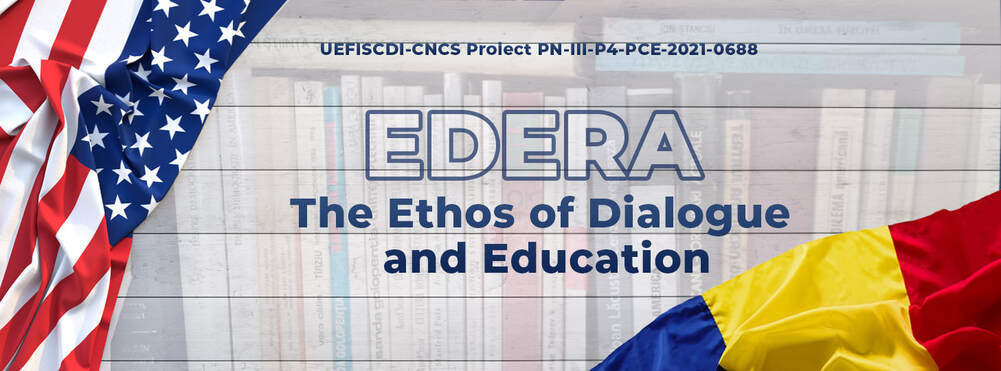
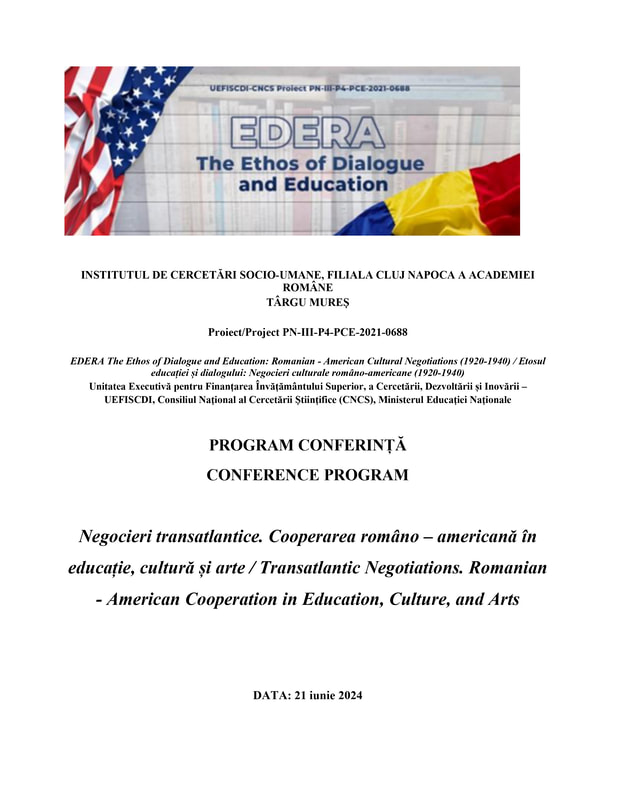
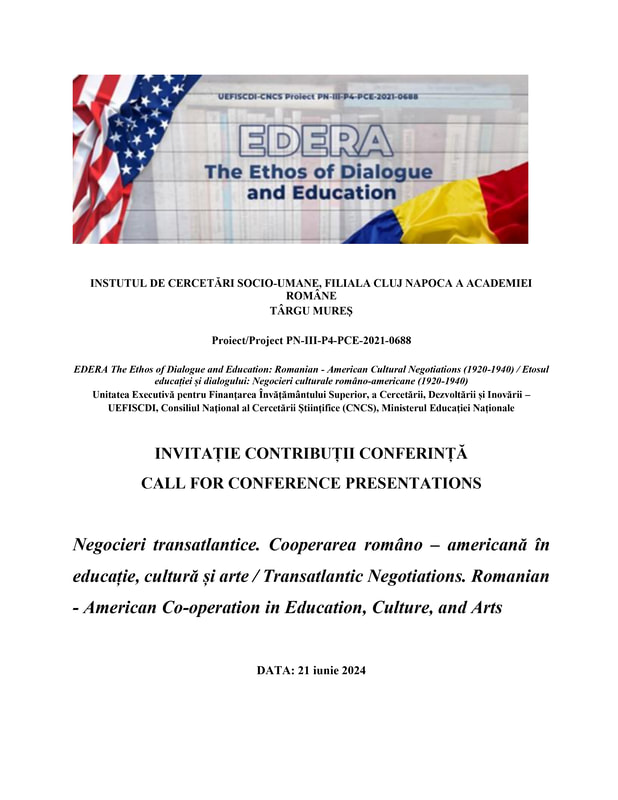
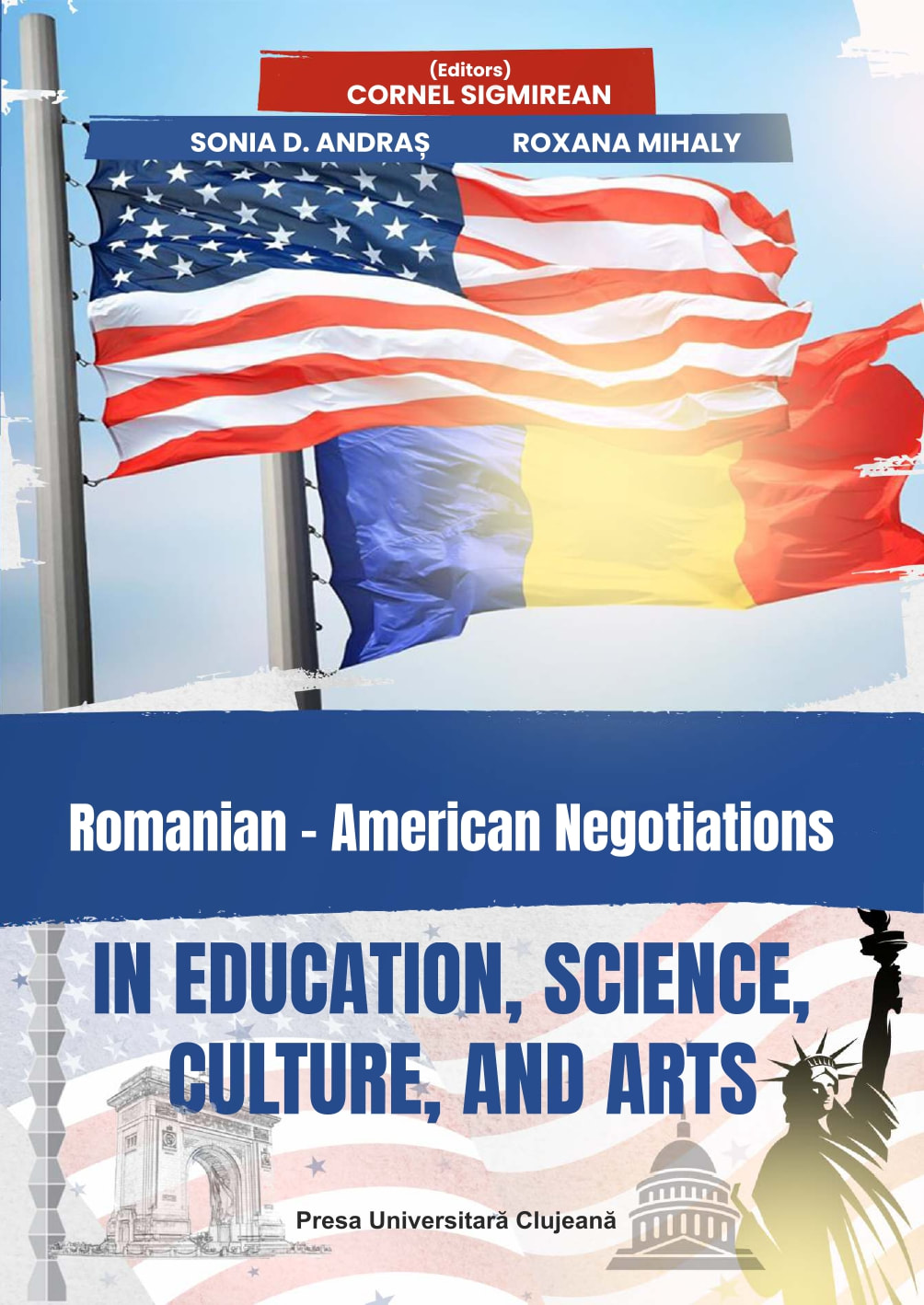
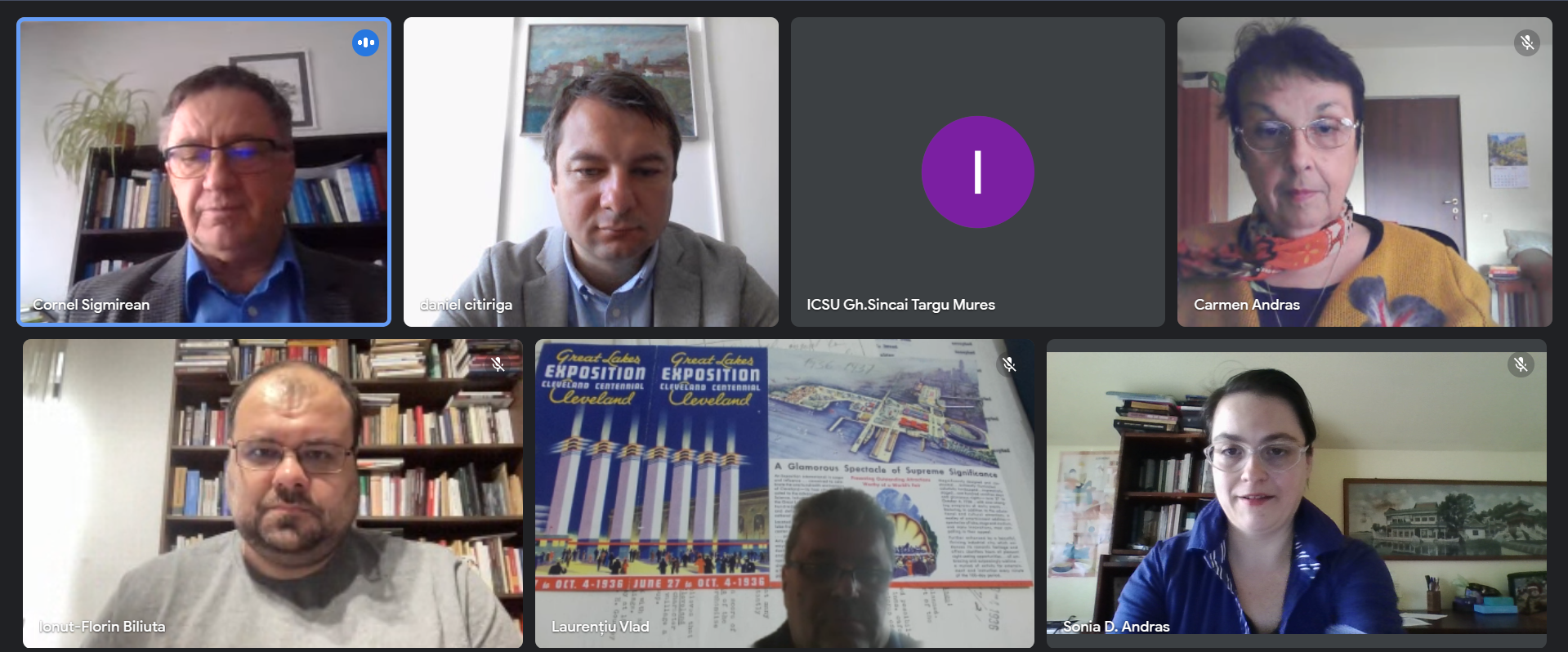
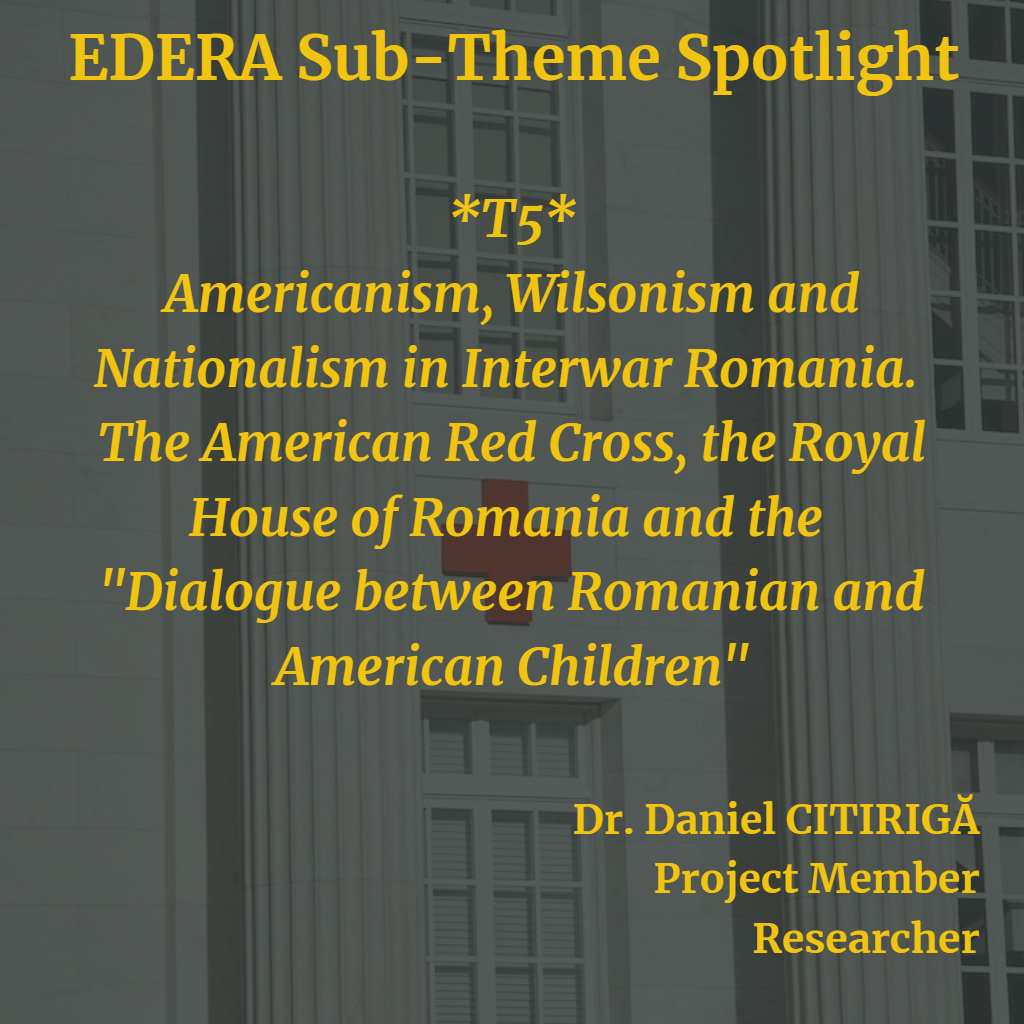
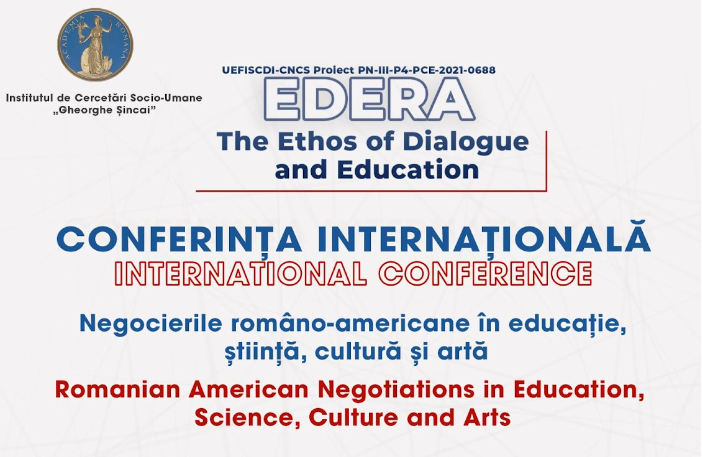
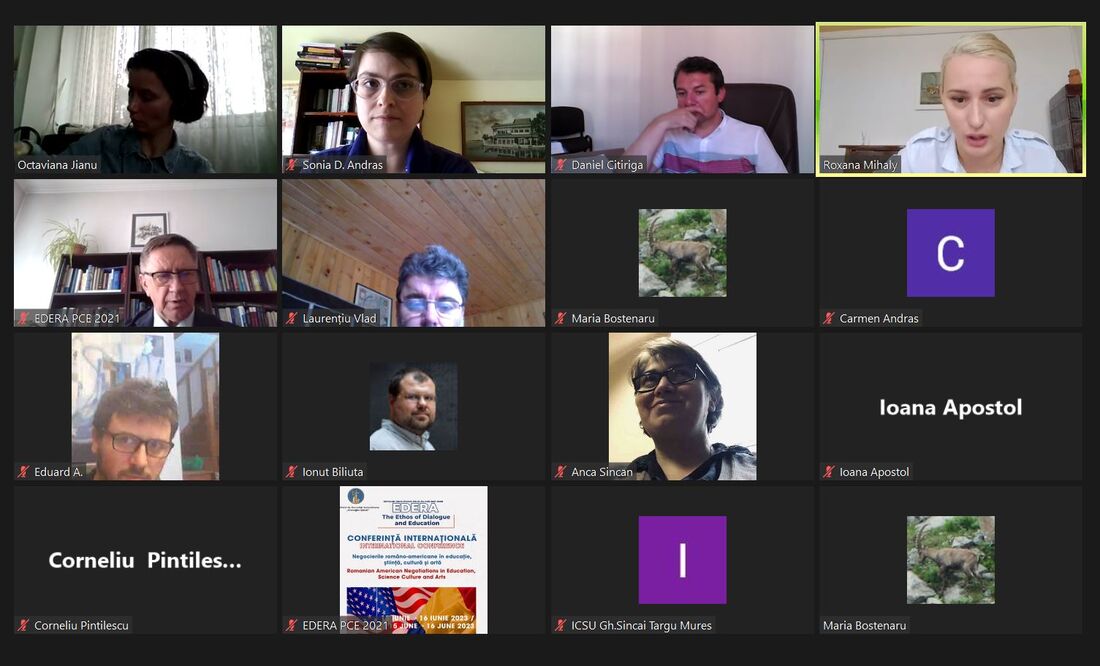
 RSS Feed
RSS Feed
